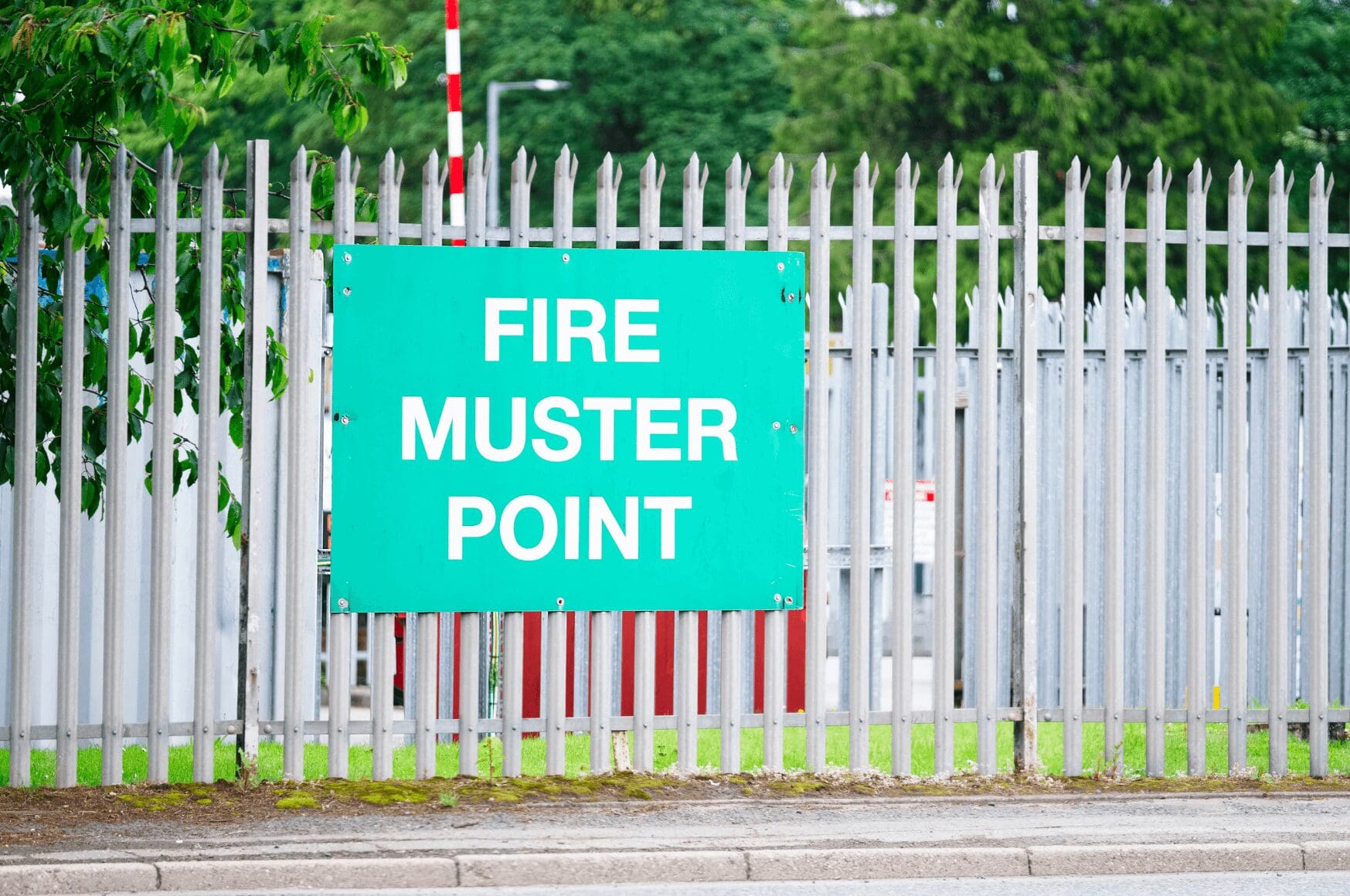Ensuring employee safety during emergencies is a top priority in any workplace. A muster point is a designated safe location where employees and visitors gather during evacuations. Setting a muster point allows for efficient headcounts during emergencies and simplifies coordination.
Having emergency plans in place, such as designated muster points, has a significant role in improving efficiency and speed for worker safety during emergencies and evacuations. Whether responding to a fire, natural disaster, or security threat, a well-planned muster point helps prevent confusion and instills a sense of security, ensuring a swift, organized response.
In this article, we’ll explore muster points, their significance, and how to set them up effectively.
What Is a Muster Point?
A muster point is a designated safe location where employees, visitors, and contractors gather during an emergency evacuation. Muster points are typically located in open, easily accessible areas away from potential hazards. It serves as a centralized meeting area to conduct headcounts, relay instructions, and ensure everyone has safely exited the building.
Common locations for muster points include:
- Parking lots or open outdoor spaces
- Designated safety zones marked with clear signage
- Nearby parks or courtyards if accessible and safe
- Secondary muster points for large sites or multi-building campuses to accommodate larger employee headcounts
Why Are Muster Points Important for Workplace Safety?
Muster points play a critical role in workplace emergency preparedness, ensuring that employees, visitors, and contractors can evacuate safely and regroup in a controlled environment.
Muster points are essential in emergency planning for a variety of reasons, such as:
- Ensuring Accountability: Muster points allow for accurate headcounts, helping safety personnel confirm that everyone has evacuated and identify anyone who may be missing.
- Preventing Confusion and Panic: During emergencies like fires, natural disasters, or security threats, a designated muster point provides clear direction, reducing chaos and ensuring a swift, organized response. This preparation helps keep everyone calm and focused.
- Regulatory Compliance: Organizations must comply with safety regulations from OSHA (Occupational Safety and Health Administration), NFPA (National Fire Protection Association), and other regulatory bodies. These regulations often require marked evacuation points as part of an emergency plan.
- Enhancing Emergency Coordination: Emergency responders rely on muster points to gather information, assess injuries, and communicate next steps efficiently.
Key Features of an Effective Muster Point
A well-planned muster point ensures orderly evacuations and effective communication during emergencies.
To be truly effective, a muster point should have the following key features:
- Visibility: The area should be clearly marked with signs and easily recognizable from all parts of the workplace. Employees and visitors should know its location in advance to reduce any confusion or risks.
- Capacity: The space must be large enough to safely accommodate all employees, contractors, and visitors without overcrowding.
- Safety: The muster point should be located away from immediate hazards, such as fire-prone areas, collapsing structures, or high-traffic zones.
- Communication Tools: To ensure smooth coordination, muster points should be equipped with smart radios, PA systems, or digital alerts to relay real-time updates and instructions.
How to Establish and Maintain Muster Points in the Workplace
Creating and maintaining effective muster points requires careful planning, communication, and, most importantly, regular drills to ensure employees know where to go in an emergency. This proactive approach ensures that everyone is prepared and knows what to do in an emergency.
Here’s a step-by-step process to establish muster points effectively:
- Conduct Risk Assessments: Identify safe locations that are easily accessible, free from hazards, and can accommodate all employees. When selecting a safe location, consider potential risks like fire zones, high-traffic areas, or environmental factors.
- Clearly Mark and Communicate: Use high-visibility signs and ensure muster points are included in workplace safety briefings and employee handbooks. New employees should be introduced to them during onboarding to ensure consistency.
- Integrate Muster Points into Emergency Drills: Regular fire drills and evacuation exercises should include gathering at muster points. This reinforces preparedness and helps identify gaps in emergency plans that can be mitigated beforehand.
- Leverage Technology for Efficiency: Use smart radios, automated alerts, and digital headcount tools to confirm attendance and communicate quickly with emergency responders. Even better if the technology can help translate instructions and communications for teams dealing with language barriers.

Best Practices in Muster Point Planning
Effective muster point planning ensures swift, organized evacuations and enhances workplace safety. Here are the best practices to follow:
- Select Safe and Accessible Locations: Choose muster points away from potential hazards, such as fire risks, falling debris, or high-traffic areas.
- Use Clear Signage: Mark muster points with high-visibility signs and ensure they are illuminated in low-light conditions.
- Ensure Multiple Muster Points if Necessary: Designate multiple muster points for extensive facilities or multi-building sites to prevent congestion and improve evacuation efficiency.
- Assign Muster Point Leaders: Designate trained individuals to take roll calls, assist employees, and coordinate with emergency responders.
- Integrate Technology: Use smart radios, real-time tracking systems, and mobile alerts to improve communication and ensure accountability during evacuations.
- Regularly Update Plans: Review and adjust muster points based on workplace changes, construction, or new safety protocols.
Muster points are a critical component of workplace safety, ensuring that employees and visitors can evacuate efficiently and be accounted for in emergencies.
Businesses can enhance safety, reduce confusion, and comply with regulatory and safety requirements by clearly designating muster points, training staff on evacuation protocols, and integrating technology like smart radios and automated alerts.
Regular reviews, signage updates, and emergency drills help keep muster points practical and functional. Now is the time to evaluate your workplace safety plan—are your muster points clearly defined and well-communicated? Prioritizing these strategies ensures swift, organized responses in any crisis, keeping everyone safe.
Learn more about Relay’s communication and emergency response tools here.







